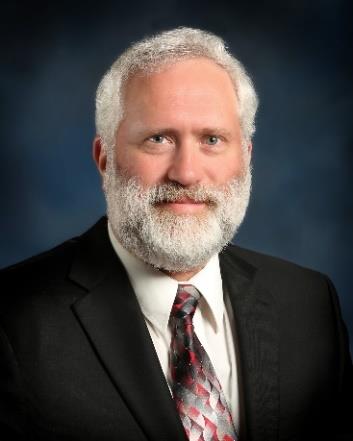
Energy Reliability Planning was identified as a high risk in MRO’s 2023 Regional Risk Assessment released earlier this year. This is due to the changing resource mix, challenges associated with demand forecasting, and the expansion of electricity into new sectors (also described as electrification).
The assessment also listed electrification as an emerging trend that could help manage the resource mix transition. Crypto loads, electric vehicles, and electric space heating are all examples of both increased demand and electrification on the power grid. Increased efficiency of these load types should reduce demand, however, increased electrification increases demand and could overshadow any decrease.
Federal carbon initiatives, like the Inflation Reduction Act, along with state carbon-free or net-zero goals over the next 15 to 20 years, are creating more electrification opportunities. This sets the stage for electrical load to skyrocket over the next five to ten years, with energy projections for 2050 expected to be more than double what they are today. This article provides more detail on the following drivers of this increase and potential impacts on power grid reliability:
- Cryptocurrency data miners
- Electrification, especially in the residential heating and transportation sectors
The advent of cryptocurrency and the large amount of electricity required to “mine” each coin requires reliable sources of electricity and can result in large around-the-clock load pockets. This is very energy intensive due to the amount of processing and high-wattage power supplies that computers require. Cryptocurrency data miners have some flexibility in when they mine and have shown a willingness to participate in organized energy markets to provide additional revenue and reduce their energy costs. Most of the participation in energy markets is in the ancillary service markets, offering spinning and supplemental reserve services. These services require short periods of demand reduction, while providing a steady stream of revenue for the willingness to quickly reduce demand in response to a system event. Most spinning and supplemental reserve calls are short duration, lasting 10 to 30 minutes on average, which make this an attractive service for cryptocurrency data miners to provide.
Situations exist where large cryptocurrency data miners have multiple server farms at various locations within a large Balancing Authority (BA) footprint. It is possible that if one location is called upon to reduce electrical demand to provide operating reserves, another location within the same footprint could increase production, potentially offsetting the demand reduction. This creates significant challenges for the BA when responding to a contingency event. The BA would see a reduced response overall, but the net load may not change at a time when the BA was counting on reduced demand. Safeguards need to be in place to ensure the BA is getting the net response it needs to adequately respond to a contingency event.
Carbon initiatives include electrification of residential heating to curb the amount of fossil fuels used for heating homes. The electricity industry does have some experience with demand response in heating and cooling. Smart thermostats offer an opportunity to help manage the demand of residential heating for short periods of time and assist in managing large ramps. (This is dependent upon having enough customers participating in such programs.)
The push to reduce carbon emissions also has the automotive industry moving away from gasoline powered vehicles to electric vehicles. This transformation will result in a higher percentage of homes with electric vehicle chargers. While electric vehicles can charge during times of low demand (overnight) and they can potentially provide energy to the grid during periods of high demand, forecasting the number of electric vehicles connected during evening peaks and what level of charge they will have after the daily commute is an unknown for grid planners and operators. Questions remain about customers’ willingness to allow utility companies to manage vehicle charging, and whether the storage capacity in electric vehicles will be enough to help cover morning peaks, especially during winter months when the morning peak is more pronounced than during warmer months.
Increases in power demand will also challenge the resource side of the industry. Conventional resources are being retired and replaced with renewable resources that have a much lower capacity factor and do not have stored fuel on-site. Storage can bridge some of the gaps, but the typical storage facility being installed today does not have adequate energy to cover daily load cycles. Adding to this challenge are backlogs in generation interconnection queues (it can take three to five years to get an interconnection request approved) and supply chain issues, both of which increase lead times for additional resources to be installed to keep pace with increased demand.
The rapid rate of increased demand over the next decade poses both challenges and opportunities for electric utilities. All four Planning Coordinators in the MRO region are projecting load increases over the next 10 years. Some of this demand may have flexibility and be able to provide services to utilities, at least on a limited basis. There are risks that if called upon too often, customers may decide the rewards do not justify the costs of providing these services. As an industry, we will need to evaluate our processes to be able to respond to customer needs as we transition to a less carbon intensive economy.
Maintaining system reliability requires a fundamental understanding of the demand that is being served and is key as we continue to work through the energy transition. Continued collaboration between utilities, industry experts, federal, state, and regional regulators is needed to ensure we maintain a reliable and resilient bulk power system that so many depend on.
– Ron Gunderson, System Control Manager, Nebraska Public Power District and RAC Member and Bryan Clark, MRO Director of Reliability Analysis
ABOUT THE AUTHORS

Ron Gunderson has over 41 years’ experience in Bulk Electric System planning and operations. He is System Control Manager at Nebraska Public Power District (NPPD), Nebraska’s largest electric utility. He currently manages the transmission and distribution control centers for NPPD. Ron has been active in MAPP, MRO and SPP activities for over 35 years and currently serves on the MRO Reliability Advisory Council, chair of the Southwest Power Pool’s (SPP) Operating Reliability Working Group (ORWG) and is a member of several SPP task forces. Ron is a registered Professional Engineer in the State of Nebraska, has a BSEE from the University of Nebraska at Lincoln and is a NERC Certified System Operator.

Bryan Clark is the Director of Reliability Analysis. This group is responsible for regional Reliability Assessments, Event Analysis, and Performance Analysis (Data Collection). Prior to joining MRO in 2018, Bryan spent 8 years with Southwest Power Pool as a transmission planning engineer, a market operations engineer, and a Supervisor of the Day Ahead Operations department. Bryan also worked for Entergy as a Nuclear Operator where he was responsible for monitoring and operating various primary and secondary plant systems at Arkansas Nuclear One (Unit 2). Bryan has a Bachelor of Science in Engineering from Arkansas State University, is a registered Professional Engineer in Arkansas and Minnesota, and is a member of the National Society of Professional Engineers.
DISCLAIMER
MRO is committed to providing non-binding guidance to industry stakeholders on important industry topics. Subject matter experts from MRO’s organizational groups have authored some of the articles in this publication, and the opinion and views expressed in these articles are those of the author(s) and do not necessarily represent the opinions and views of MRO.